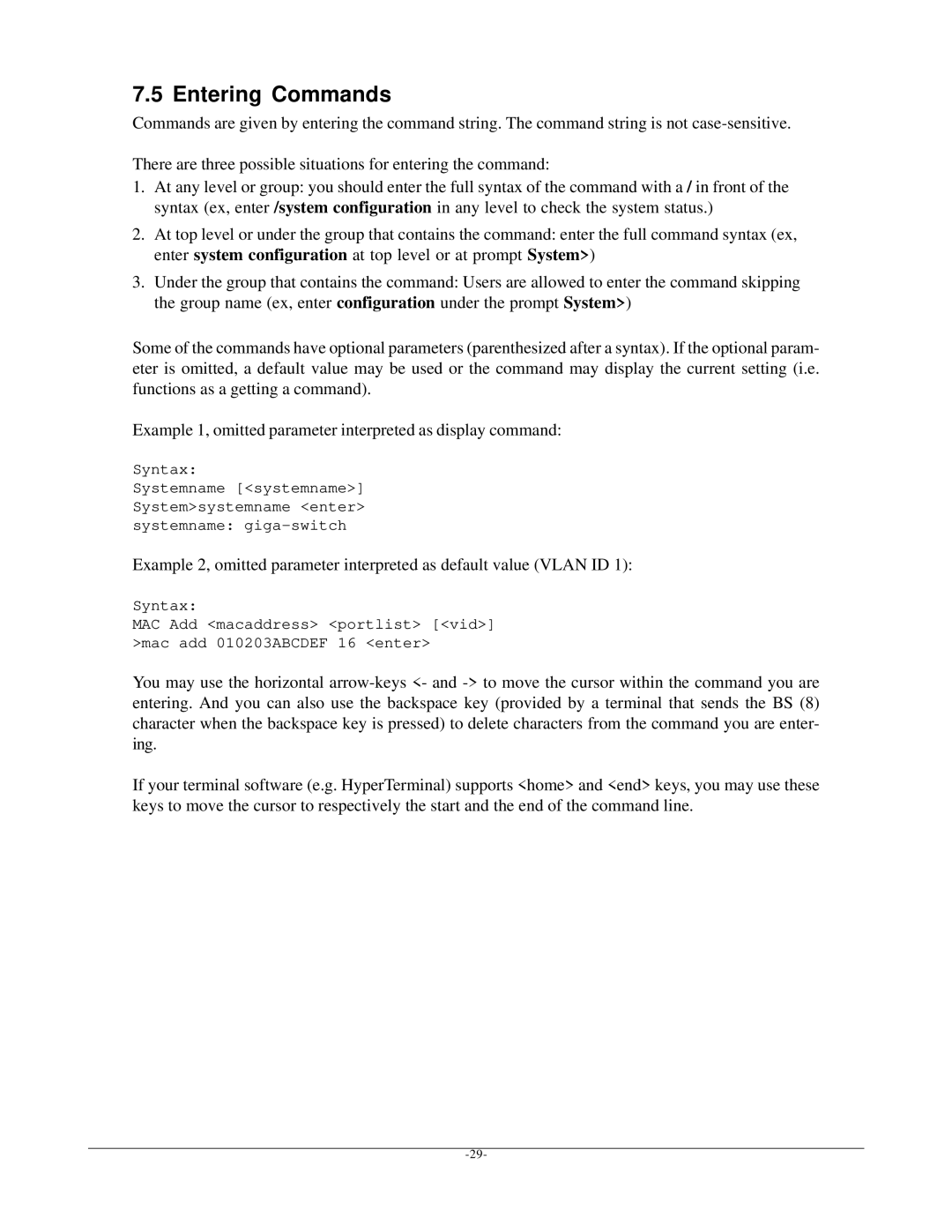7.5 Entering Commands
Commands are given by entering the command string. The command string is not
There are three possible situations for entering the command:
1.At any level or group: you should enter the full syntax of the command with a / in front of the syntax (ex, enter /system configuration in any level to check the system status.)
2.At top level or under the group that contains the command: enter the full command syntax (ex, enter system configuration at top level or at prompt System>)
3.Under the group that contains the command: Users are allowed to enter the command skipping the group name (ex, enter configuration under the prompt System>)
Some of the commands have optional parameters (parenthesized after a syntax). If the optional param- eter is omitted, a default value may be used or the command may display the current setting (i.e. functions as a getting a command).
Example 1, omitted parameter interpreted as display command:
Syntax:
Systemname [<systemname>] System>systemname <enter> systemname:
Example 2, omitted parameter interpreted as default value (VLAN ID 1):
Syntax:
MAC Add <macaddress> <portlist> [<vid>] >mac add 010203ABCDEF 16 <enter>
You may use the horizontal
If your terminal software (e.g. HyperTerminal) supports <home> and <end> keys, you may use these keys to move the cursor to respectively the start and the end of the command line.
